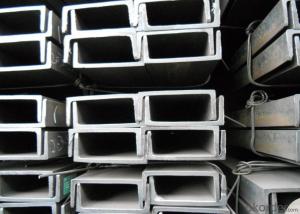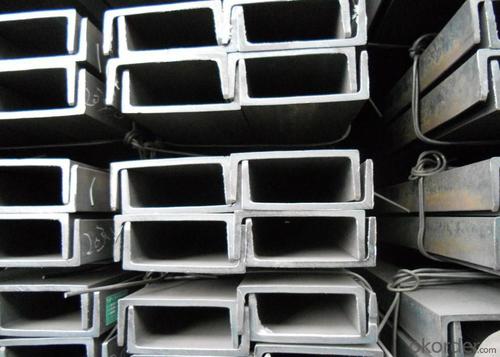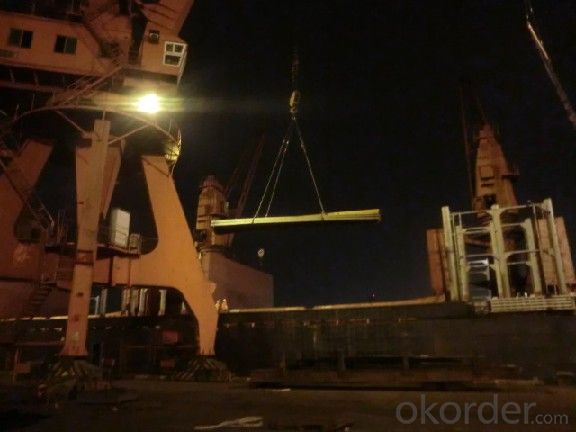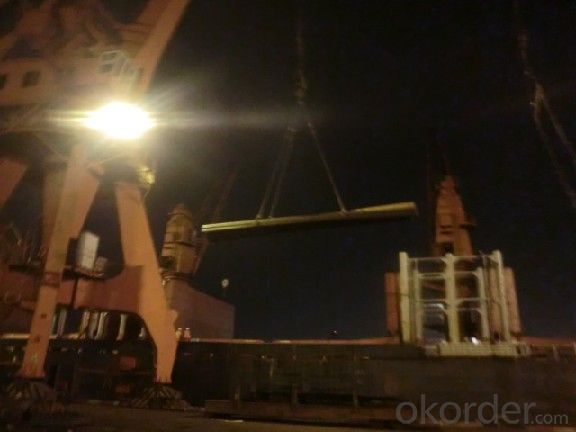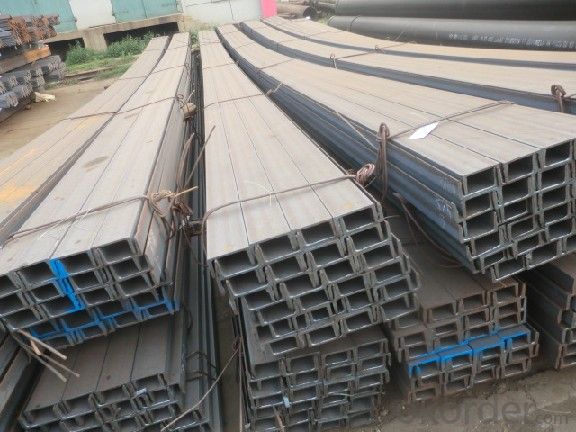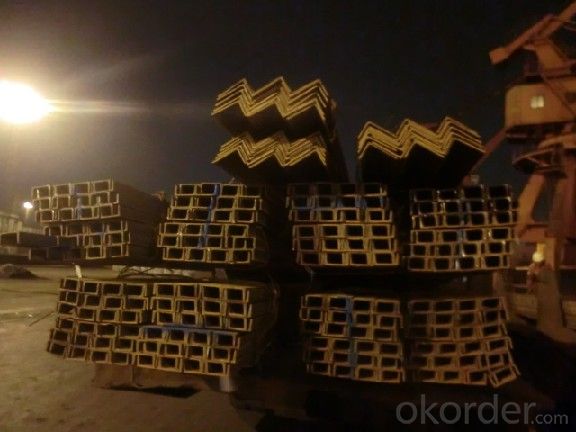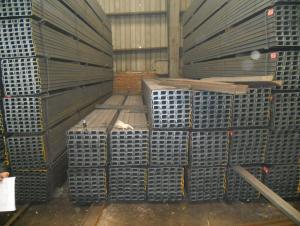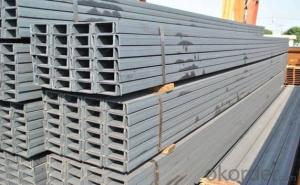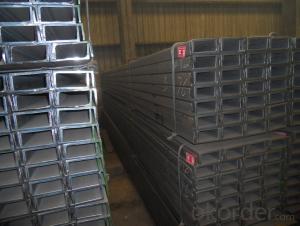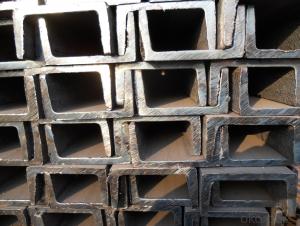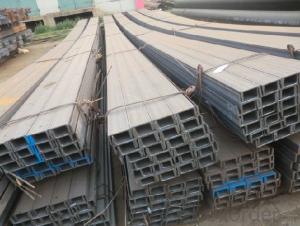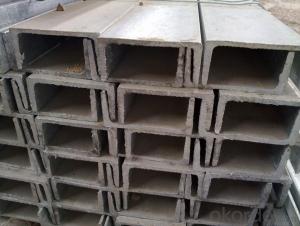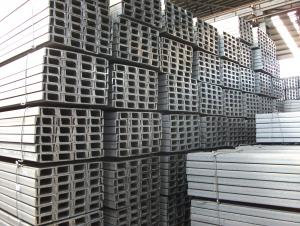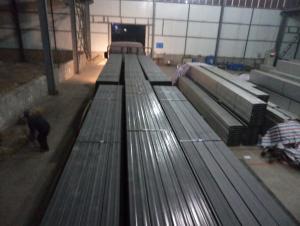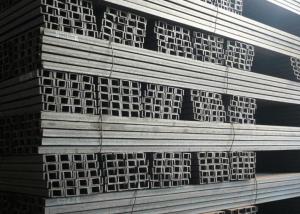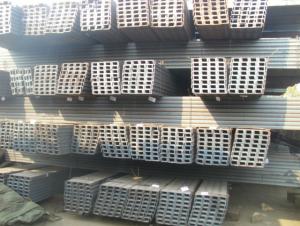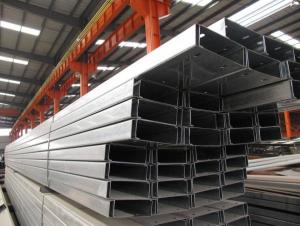HOT ROLLED U-CHANNEL STEEL EN Standard(UPN)
- Loading Port:
- Tianjin
- Payment Terms:
- TT or LC
- Min Order Qty:
- 25 m.t
- Supply Capability:
- 20000 m.t/month
OKorder Service Pledge
OKorder Financial Service
You Might Also Like
Product Description:
OKorder is offering HOT ROLLED U-CHANNEL STEEL EN Standard(UPN) beam prices with worldwide shipping. Our supplier is a world-class manufacturer of steel, with our products utilized the world over. OKorder annually supplies products to European, North American and Asian markets. We provide quotations within 24 hours of receiving an inquiry and guarantee competitive prices.
Product Applications:
HOT ROLLED U-CHANNEL STEEL EN Standard(UPN) ideal for structural applications and are widely used in the construction of buildings and bridges, and the manufacturing, petrochemical, and transportation industries.
Product Advantages:
OKorder's HOT ROLLED U-CHANNEL STEEL EN Standard(UPN) durable, strong, and resist corrosion.
Main Product Features:
· Premium quality
· Prompt delivery & seaworthy packing (30 days after receiving deposit)
· Corrosion resistance
· Can be recycled and reused
· Mill test certification
· Professional Service
· Competitive pricing
Product Specifications:
Steel U Channel Details:
Minimum Order Quantity: 25 Tons Unit: m.t. Loading Port: Xingang Port
Supply Ability: 1000 Tons Per Day Payment Terms: TT or L/C
Product Description:
Specifications of Steel U Channel:
Standard Applied: GB Standard, EN Standard(UPN), JIS Standard
Sizes: 50mm to 300mm
Material Grade: Q235B, Q345B, S235JR, SS400, ASTM A36
As shown in the figure:
FAQ:
Q1: Why buy Materials & Equipment from OKorder.com?
A1: All products offered byOKorder.com are carefully selected from China's most reliable manufacturing enterprises. Through its ISO certifications, OKorder.com adheres to the highest standards and a commitment to supply chain safety and customer satisfaction.
Q2: How do we guarantee the quality of our products?
A2: We have established an advanced quality management system which conducts strict quality tests at every step, from raw materials to the final product. At the same time, we provide extensive follow-up service assurances as required.
Q3: How soon can we receive the product after purchase?
A3: Within three days of placing an order, we will begin production. The specific shipping date is dependent upon international and government factors, but is typically 7 to 10 workdays.
Images:
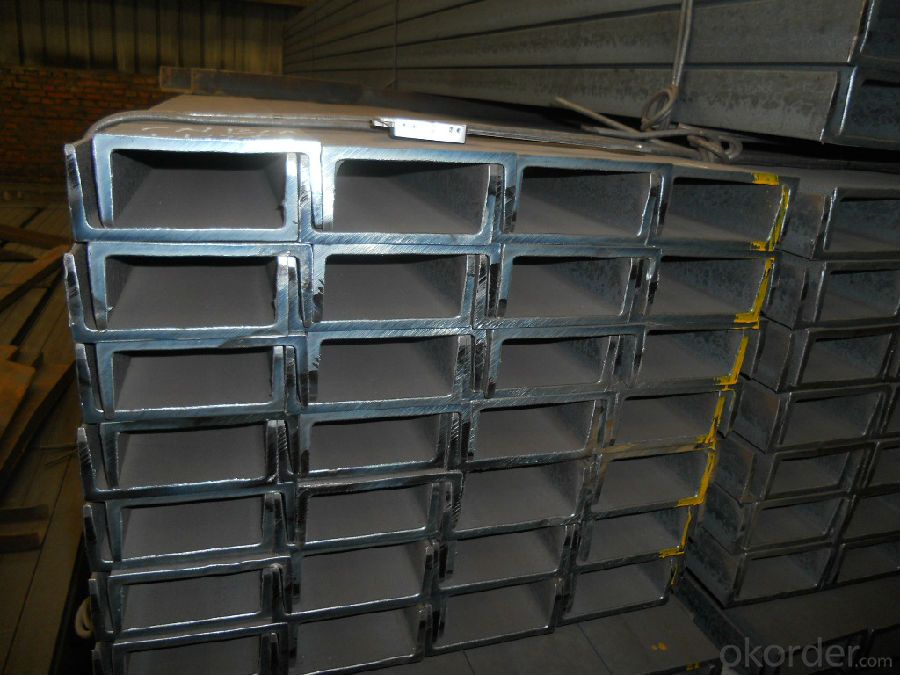
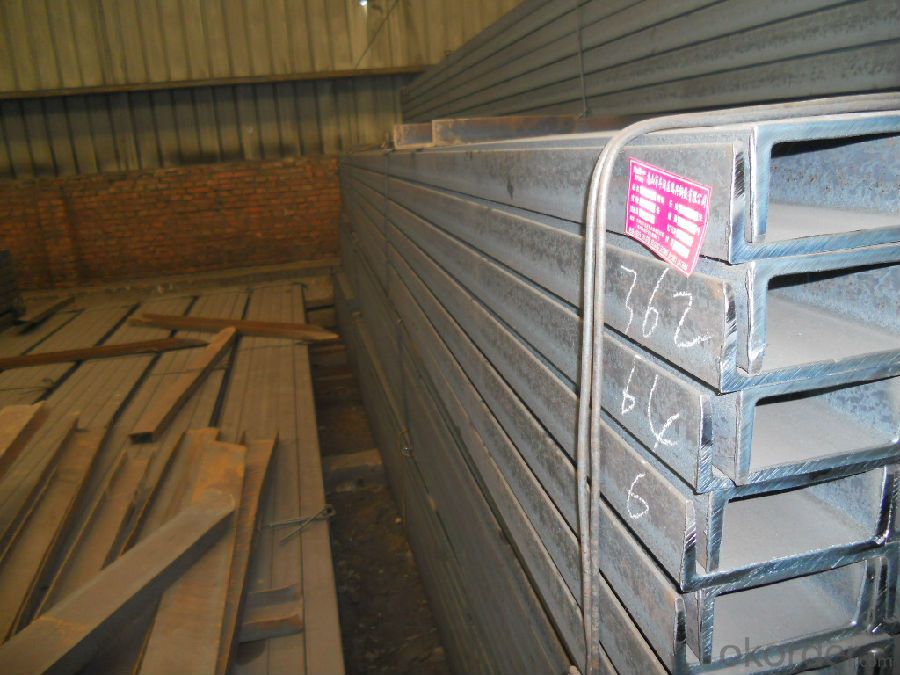
- Q: What are the load-bearing capabilities of steel channels?
- The load-bearing abilities of steel channels vary depending on several factors like dimensions, material grade, and the specific application at hand. Steel channels are designed to offer structural support and are commonly utilized in construction and engineering projects. The shape and size of a steel channel significantly impact its load-bearing capacity. The channel's depth, width, and thickness determine its overall strength and ability to endure loads. Additionally, the material grade of the steel channel plays a vital role in determining its load-bearing capabilities. Generally, higher grades of steel possess greater tensile and yield strengths, enabling them to support heavier loads. Engineers typically rely on industry standards and reference tables to precisely determine the load-bearing capabilities of a steel channel. These resources provide guidance on the safe working loads for different sizes and grades of steel channels. When calculating the maximum load a steel channel can bear, engineers also consider factors like the type of loading (e.g., static or dynamic), the support conditions (e.g., fixed or pinned), and the required safety factor. It is important to acknowledge that factors such as the quality of fabrication, the presence of defects or damage, and the overall structural design can also influence load-bearing capabilities. Therefore, consulting a qualified engineer or referring to appropriate design codes and regulations is crucial when determining the load-bearing capabilities of steel channels for a specific application.
- Q: What is the elastic modulus of steel?
- When the material is in the elastic deformation stage, its stress and strain should be changed into a positive proportion (that is to say, according to Hooke's law), and the coefficient of proportionality is called the elastic modulus. The elastic modulus of the unit is dyne per square centimeter. "Modulus of elasticity" is a physical quantity describing the elasticity of matter. It is a general term. It can be expressed as "Young's modulus", "bulk modulus" and so on.When it is difficult to cause confusion, the modulus of elasticity of a general metallic material refers to Young's modulus, i.e., positive modulus of elasticity.Unit: E (elastic modulus) MPa (MPa)
- Q: The reinforced welding off? Can the channel steel locked with expansion screws be taken out?
- The cutting machine can be used to make the welding areas thin and then knock. We used to be like this in the factory. So knock down and nothing will go wrong
- Q: What are the advantages of using hot-rolled steel channels?
- Some advantages of using hot-rolled steel channels include their high strength-to-weight ratio, durability, and cost-effectiveness. Hot-rolled steel channels are able to support heavy loads while minimizing material weight, making them ideal for structural applications. Additionally, their hot-rolled manufacturing process ensures a consistent and uniform shape, resulting in accurate and easy installation. Furthermore, hot-rolled steel channels are often more affordable compared to other materials, making them a popular choice for various construction projects.
- Q: Can steel channels be used for signage installations?
- Yes, steel channels can be used for signage installations. Steel channels provide a sturdy and durable framework for mounting and supporting signage. They are commonly used in outdoor signage installations, such as billboards, roadside signs, and large-scale displays. Steel channels offer excellent structural integrity and can withstand various weather conditions, ensuring the stability and longevity of the signage. Additionally, steel channels can be customized and fabricated to suit the specific requirements of the signage, allowing for precise installation and alignment. Overall, steel channels are a reliable and robust choice for signage installations.
- Q: What are the different methods of joining steel channels?
- There are several methods of joining steel channels, including welding, bolting, riveting, and adhesive bonding.
- Q: Do steel channels have any specific acoustic properties?
- Yes, steel channels do have specific acoustic properties. Due to their rigid structure and dense material, steel channels are known for their high sound transmission loss, providing effective sound insulation. Additionally, they exhibit low resonance and vibration, reducing the potential for noise amplification or distortion. These acoustic properties make steel channels a preferred choice in various applications that require sound control and acoustic performance.
- Q: Can steel channels be used in the food processing industry?
- Indeed, the utilization of steel channels in the food processing industry is possible. Steel channels, as versatile and robust structural components, have the capability to be employed in various applications, including the food processing sector. They are commonly utilized for the construction of infrastructure, machinery, and equipment within food processing facilities. For the food processing industry, steel channels are an excellent choice due to their durability, resistance to corrosion, and hygienic properties. They have the ability to withstand harsh conditions such as fluctuations in temperature, moisture, and exposure to chemicals, all of which are commonly encountered in food processing environments. Moreover, steel channels can be easily cleaned and maintained, ensuring that proper hygiene standards are upheld. In the food processing industry, steel channels have a wide range of uses. They are frequently employed in the construction of conveyor systems, support structures, walkways, and platforms. Steel channels provide stability and strength to these structures, enabling safe and efficient movement of materials and personnel within the food processing plant. Furthermore, steel channels are commonly used in the fabrication of food processing equipment, including mixers, blenders, packaging machines, and storage systems. The high strength of steel channels guarantees the reliability and longevity of these equipment, allowing them to withstand the demands of food processing operations. Overall, steel channels are an appropriate selection for the food processing industry due to their strength, durability, resistance to corrosion, and hygienic properties. They offer the necessary structural support and reliability required in this industry, making them an indispensable component for numerous applications within food processing plants.
- Q: Can steel channels be used for exhibition stands?
- Certainly! Exhibition stands can indeed utilize steel channels. These channels, renowned for their robustness and endurance, are widely employed in the construction and engineering sectors. Their exceptional structural reinforcement makes them an excellent choice for crafting resilient exhibition stands. Moreover, steel channels offer the advantage of effortless customization and molding to meet precise design specifications, thus enabling the creation of versatile and distinctive stand layouts.
- Q: What are the different types of steel channel sections?
- There are several different types of steel channel sections, including C channels, U channels, and Z channels. C channels have a C-shaped cross-section and are commonly used for structural applications such as framing and supports. U channels have a U-shaped cross-section and are often used as edging or trim on metal sheets or as structural components in construction. Z channels have a Z-shaped cross-section and are typically used for framing and support applications where additional strength is required.
Send your message to us
HOT ROLLED U-CHANNEL STEEL EN Standard(UPN)
- Loading Port:
- Tianjin
- Payment Terms:
- TT or LC
- Min Order Qty:
- 25 m.t
- Supply Capability:
- 20000 m.t/month
OKorder Service Pledge
OKorder Financial Service
Similar products
Hot products
Hot Searches
Related keywords
